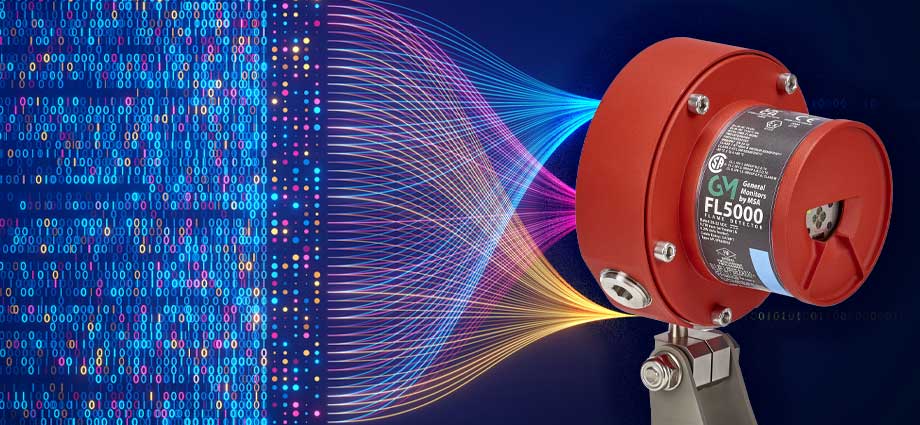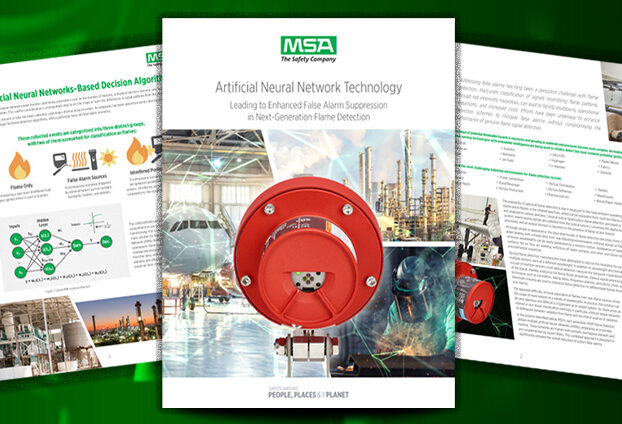
In industrial settings where flammable materials are handled, flame detection systems are an important layer of safety programs. False alarms in these systems disrupt operations and can risk desensitizing personnel to alerts. Different flame detection methods have different false alarm profiles in different applications. Advanced flame diagnostic technologies have been and are being developed to enhance these systems, including to reduce false alarms. Among these technologies, artificial neural networks (ANNs) stand out as a promising option, offering false alarm reduction.
Understanding the Challenge:
Flame detection systems rely on various sensors, including infrared (IR) and ultraviolet (UV) detectors, to identify the presence of flames. However, these sensors are susceptible to interference from sources such as sunlight, arc welding, and hot surfaces, that can lead to false alarms. Additionally, environmental factors such as dust, smoke, and fog can further limit flame detectors, complicating the task for conventional systems. In applications with these variables, distinguishing between genuine threats and false alarms can be challenging for those systems.
What Are Advanced Diagnostic Technologies:
ANNs are one way to address this challenge. ANNs are computational models inspired by the structure and functioning of the human brain, capable of learning complex patterns and making decisions based on vast datasets. When applied to flame detection, ANNs excel in discerning subtle differences between actual flames and potential sources of interference, thereby significantly reducing false alarms.
How ANNs Work in Flame Detection:
ANNs are trained using extensive datasets of spectral data of both real flames and common sources of interference. Through a process known as supervised learning, the network adjusts its internal parameters to optimize its ability to accurately classify input data. Once trained, the ANN can swiftly analyze incoming sensor data and determine whether a detected anomaly corresponds to a genuine flame or a false alarm. MSA has been at the forefront of using artificial neural networks in flame detection technology since 2005.
Numerous industries, including oil and gas, chemical processing, and manufacturing, have embraced ANNs for flame detection with remarkable results. By integrating ANNs into their safety systems, companies have reported significant reductions in false alarms, leading to enhanced operational continuity and worker safety. Moreover, the scalability of ANNs allows for deployment across diverse environments, from offshore platforms to industrial plants, further underscoring their versatility and effectiveness.
Key Advantages of ANNs in Flame Detection:
1. Adaptability: ANNs are prepared for varying environmental conditions and sources of interference due to a large training library, enhancing their robustness in real-world applications.
2. Accuracy: By leveraging sophisticated pattern recognition capabilities, ANNs can differentiate between genuine flames and false alarms with high precision.
3. Efficiency: ANNs can process large volumes of data in real-time, enabling rapid decision-making and minimizing response times in critical situations.
4. Reduced Maintenance: With fewer false alarms, flame detection systems incorporating ANNs require less frequent maintenance, resulting in cost savings and operational efficiency improvements.
Introducing the General Monitors® FL5000 MSIR Flame Detector
We are pleased to introduce our latest generation flame detector, the FL5000 Multi-Spectrum Infrared (MSIR) Flame Detector. The FL5000 builds on the foundation set by the FL4000H with increased neural network capabilities that reduce false alarms even further. The proprietary MSIR flame algorithm effectively assures that the detector verifies the presence of a legitimate flame before initiating an alarm, safeguarding both your assets and budget. In addition, the FL5000 is the first to bring Bluetooth technology to flame detection. With its exclusive Flame Connect App, users can easily setup, configure, and download event logs from mobile devices.
Conclusion:
When reliable flame detection is part of an industrial operation’s safety program, advanced diagnostic technologies, particularly artificial neural networks, offer excellent accuracy and efficiency while helping to minimize false alarms. By harnessing the power of ANNs, industries can help mitigate risks, protect assets, and safeguard personnel. As technology continues to evolve, the integration of next-generation ANNs is poised to set new benchmarks for excellence in industrial flame detection.

Download new whitepaper: Artificial Neural Network Technology: Leading to Enhanced False Alarm Suppression in Next-Generation Flame Detection
Download the Whitepaper






